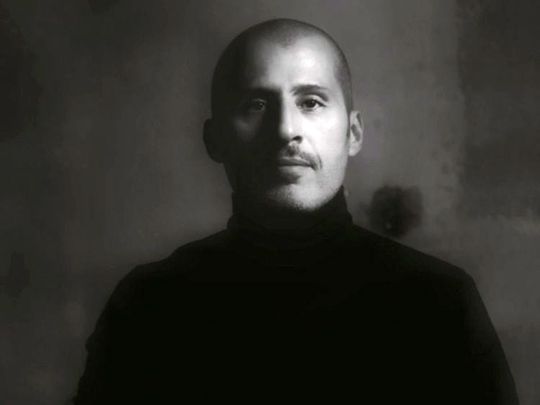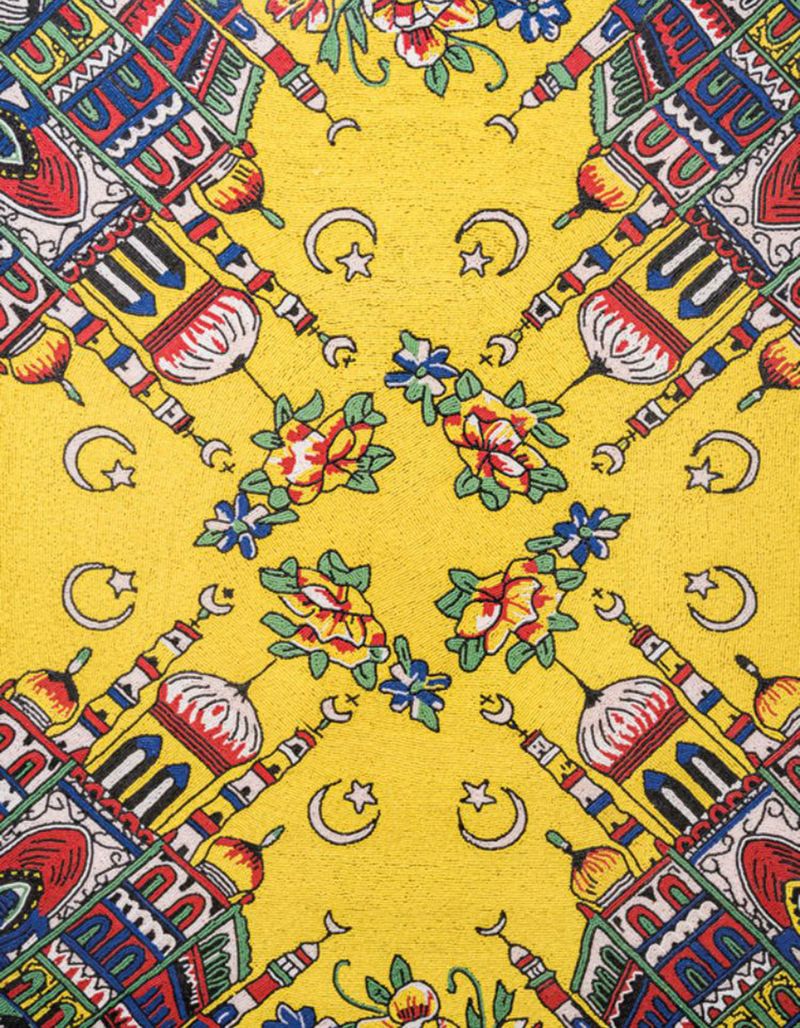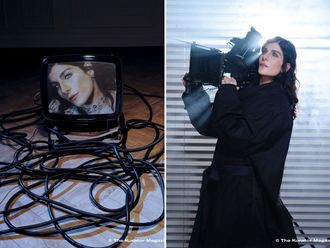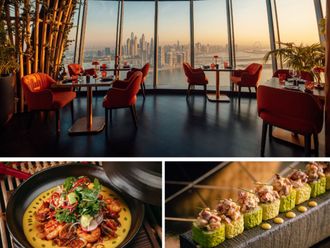
A room filled with vibrantly coloured beaded works depicting the three holy sites every Muslim pilgrim aspires to see—Makkah, Madinah and Jerusalem—constituted an artwork by Saudi artist Sultan bin Fahad created for the first edition of the Diriyah Biennale in the JAX district of Riyadh at the end of 2021. Titled Dream Travelled (2021), the room is startlingly beautiful, almost meditative with its alignment of Hajj murals and images from the Holy Qur’an made of thousands of coloured beads. The work was pivotal not only for its aesthetic and subject matter but for its display in the first ever contemporary art biennale to be staged in the Kingdom. Over the last several years, Sultan bin Fahad has created artworks and staged exhibitions that often incorporate remnants in the form of relics, discarded objects and memorabilia from Saudi Arabia’s past in the creation of highly conceptual artworks that look to revive and remember their role in the Kingdom’s social metamorphosis.

“I use nostalgia to investigate Saudi culture, contemporising our past and digging up the stories emanating from within found objects,” Bin Fahad explains. In March 2019 he staged ‘The Red Palace’ exhibition inspired by the Red Palace in Riyadh, an important palace in the Kingdom’s capital that played an important role in key historical and political events of the 20th century. The exhibition took place during a crucial time for the Kingdom—just a few months prior to the granting of tourist visas to allow visitors access to Saudi Arabia after it had been closed for decades. In many ways, the Saudi art -scene, which had been a largely grassroots and underground enterprise for decades, has grown in tandem with the Kingdom’s grand schemes for transformation and is now supported by the Ministry of Culture. Bin Fahad is one of the country’s artists whose work has been widely exhibited both at home and abroad in a variety of public and private exhibitions.
Conceptual in nature that allows the viewer to investigate the meaning behind his art while reveling in the -aesthetic -magnitude of his variously sized installations, Sultan bin Fahad, as he explains, wants to shine light through his art on unknown parts of history. “My work is all about taking unfamiliar parts of history to recontextualise them in familiar ways through conceptual art; to me, it’s about deconstructing prior ideas, stripping them down, and giving them new life in my own personalised conceptual world,” he says. His main medium remains the material culture of his native Saudi Arabia. Through his work, he reinterprets stories and narratives found in the historical telling of the Kingdom and gives them new life and form through his art. The result are works that serve to reimagine found objects, Islam, Saudi history and identity.
The artistic journey and process of creating his work, which regularly involves scavenging to find old or lost material, is intrinsic to Sultan bin Fahad’s art creation. “I’m always on the -lookout for the next great thing,” he says. “All my works are special to me—and The Red Palace was a particularly special case, a happy accident of venue inspiring creation, the space itself being vital to my work there—but to be honest my greatest work is always the one I’m working on, and when that’s done and exhibited to the public the floor is open for their -judgement.”
His work is one that commemorates but also intellectualises the Kingdom’s past and present history and it does so through a nostalgic beauty—one that strives to rekindle moments that might have been forgotten to most, but which serve as vital understanding for the present day transformation occurring in Sultan bin Fahad’s country.

During this year’s inaugural Islamic Arts Biennale in Jeddah, staged by the Diriyah Biennale Foundation, Sultan bin Fahad presented Holy Land (2023), a mixed media installation -revealing the souvenirs and other wares that were once sold by merchants and pilgrims in the two Holy cities of Makkah and Madinah. In the form of prayer mats, thermos flasks, bottles, tins and other objects, all decorated in the style of their countries of origin, the pieces reflect remnants of an economy that now no longer exists. Onto the objects, Sultan bin Fahad has imposed images once found on flasks sold to create what he called “a garden of love and joy” in which the visitors to the artwork can choose their own path.
“For writers they say write what you know, so for me it’s more so that I create what I know while also always trying to know more,” he explains. “I have a process: I think of or learn of -something I like (whether a tangible piece, a story, or a theoretical object), I start researching everything about it in a deep dive, and then I begin conceptualising it to life through an exciting creation. Sometimes it’s a success, sometimes it isn’t, but what’s most important to me is not the endpoint but the process; the creative journey is integral in my opinion to knowing the past and understanding the future.”
In reflecting on his country’s past through found materials and other items, Sultan bin Fahad also creates work that allow for present personal exploration, as he did with Holy Land. The visitor or viewer of the work takes in the messages, historical and cultural symbolism presented to them, and then, through the work, is provided ways to personally reflect.

In Desert Kite (2022), a large outdoor installation bin Fahad created for the last edition of Desert X AlUla. Created in the shape of a desert kite, or keyhole, a traditional construction found in the northwest of Saudi Arabia created to trap animals, which appeared in deserts and ancient sites of heritage, including AlUla’s landscapes, were also most likely used by the Nabataeans to decorate their monuments and to -celebrate and protect their -communities both in life and death. Sultan bin Fahad recreated the shape to create a form that both collects and herds—like its ancient predecessor. Inside, the structure has an open-air circular chamber within which a clear urn in the form of a tall spike is placed in the center and can also been seen from outside of the structure. If one looked carefully at the urn, it seemed that mythical creatures could be trapped inside.
While a work that reflects on Saudi’s ancient past, it also leaves room for the visitor to experience it and explore. The open-air chamber itself is akin to a meditative room. Inside, the spectator can stop, rest and ponder not only the heritage Sultan bin Fahad recreates but also the beauty of AlUla’s natural surroundings.
In another recent work, this time in the form of a carpet collection titled Delights commissioned by Iwan Maktabi for the first of its kind curated collection of carpets that commissioned creatives from the Gulf region, Sultan bin Fahad -commemorates familiar phrases traditionally used during weddings and other happy occasions. Laden with vibrant colours and elaborate detailing, like that found in Dream Travelled, the visuals Sultan bin Fahad used for his collection of carpets were inspired by a traditional Saudi tin box of delights with inscriptions of prosperous wishes. They were historically offered to guests attending weddings. On the carpet, the hands of the bride and groom’s fathers come together to seal the promise of everlasting union. The image is framed by rose petals, swirling lines and colored vines reflective of the edges of time. The collection depicts a scene of happiness, unity and adoration. It is a moment of divine order and love—one to stand the test of time.
The collection is, like other works by Sultan bin Fahad, a journey through time, place, culture, beauty, strife and history.Connecting past to present, Sultan bin Fahad’s stories evoke -multi-layered journeys between the latent relationship of what is remembered and what remains silently contained within the corporeal.
Art for bin Fahad is a journey through intangible memories and tangible cultures. It rekindles the past with the present.






